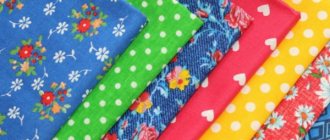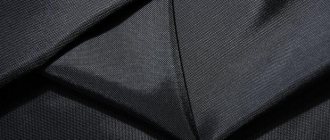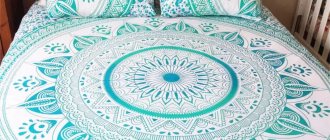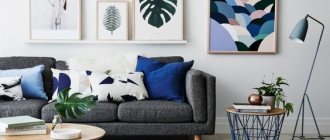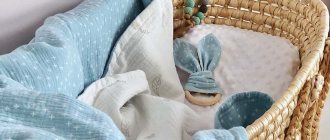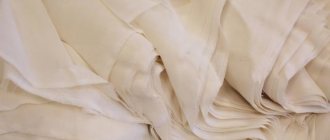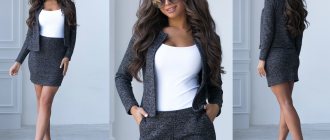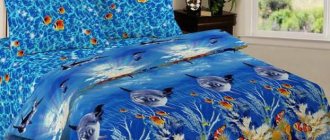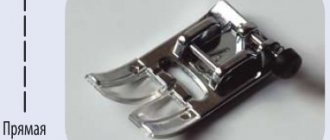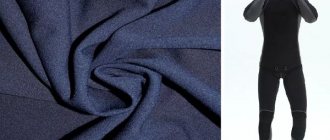At first glance, a sofa cushion seems to be an insignificant, optional accessory, the absence of which will not be felt in the overall interior or the comfort of the owners. But years of practice and design experiments have proven the opposite. A soft cushion significantly affects the appearance of furniture, its comfort, and even functionality. And famous designers around the world talk about combinations of sofa cushions with interior items.
So should you be content with the standard set of pillows? We suggest moving away from stereotypes, plunging into the world of creativity, creating truly exclusive, beautiful accessories that will harmonize with the interior and attract with their softness. And the tips below will help you realize your plans easily and quickly.
General tips for choosing pillow fabric
To ensure that your favorite pillow lasts as long as possible, it is covered with a pillowcase. The choice of fabric directly depends on the purpose of the household item.
The most necessary tips:
- pillows used for sleeping are covered in covers that are soft and pleasant to the skin (cotton, linen, silk pillowcases);
- fabric for decorative pillows is used with a strong structure that is resistant to wear (teak, satin, jacquard, twill, percale, cambric).
For delicate and soft filling, choose thin fabric for pillows. Down products are an exception. Dense material should not allow fluff and feathers to pass through, remaining durable. It is cotton teak that has these characteristics.
Modern interior
To choose the right fabric for a pillowcase for a wool product, you need to take into account the breathability and thermal conductivity of the fabric. In this case, cotton will be the ideal material for a pillowcase.
Silk bedding can be covered with satin covers, and microfiber pillowcases made from natural fabrics.
Sofa cushions are designed for long-term use, so the durability of the material is taken into account. Upholstery fabrics in the form of fleece, faux suede, fur or velor can create comfort and ease in the elements used in the interior of the room.
Attention! Fabric for sofa cushions is chosen taking into account the combination of colors of furniture, curtains, paintings and floor coverings. The modern style of products decides a lot in the design of a home.
Variety of colors
Fabric characteristics
The type of thread weaving is the most important indicator of the type of material.
Note! The quality characteristics of fabrics differ depending on the composition of the thread and the strength of the fibers.
Differences:
- Teak, made from cotton or linen, is wear-resistant and durable. Teak pillowcases hold their shape well and have water-repellent properties.
- Smooth satin is a soft material that hardly wrinkles and adapts well to the desired body shape. Excellent ventilation properties allow the scalp to breathe during hot periods.
- Satin jacquard is distinguished by its beauty and sophistication. Elegant pillows look harmonious on the bed and on the sofa.
- Twill makes the interior item elastic and voluminous. The fabric is soft to the touch and quite strong and dense.
- Percale is one of the best linen fabrics. The soft and wear-resistant material can be easily painted in bright colors, delighting the eyes with multi-colored pillows.
- Batiste is made from the finest threads of cotton and is used for airy down pillows. The range of such products is used for infants and allergy sufferers, people with sensitive skin.
- Cotton is the most inexpensive of the non-allergenic fabrics. The material is easy to care for.
- Linen is ideal for use in hot weather. The surface of the fabric slightly cools the skin when in contact with the pillowcase.
- Silk remains soft at any time of the year. Pleasant to the touch like royal material, it requires appropriate care.
- Wool with a “dry heat” effect relieves ailments, relieves muscle, headache and toothache. Requires special care. The fabric is prone to shrinkage.
You might be interested in this Description and features of sewing an openwork lambrequin yourself on your own
Decorative pillow
Options
The most popular fabric options.
- Satin.
A type of cotton product, it has quite high strength, and it is attractive in appearance, as it gives off a glossy appearance.
Satin is a cotton fabric made by weaving twisted threads.
- Batiste.
It is light, soft, but prone to rubbing.
Batiste is a light and transparent fabric.
- Jacquard.
This is not a simple weaving of different types of fibers; it has strength, elasticity, breathability and aesthetics.
It is dense, elastic, and allows air to circulate well.
- Percale.
It is relatively hard-wearing, breathable, and tends to retain heat.
High-strength cotton fabric made from untwisted threads.
- Flannel.
It retains heat, but quickly loses its former appearance due to the appearance of pellets. The owners are happy with it: comfortable, soft, pleasant.
Flannel is a cotton, wool or wool blend fabric of plain or twill weave.
- Bamboo.
It is natural, has a glossy surface, and is believed to have an antibacterial effect on the environment.
Bamboo is a natural material, similar in quality to silk.
- Linen.
It is thin, durable and wear-resistant, usually woven together with cotton.
Linen is the oldest fabric; it used to be difficult to obtain, but now it is easily available.
- Tick or tick-inlet.
Chinese material, gaining popularity in the world, it is dense and soft, but it is important to choose the right one.
Teak is a dense natural fabric intended primarily for sewing mattress covers, bedspreads, covers, and awnings.
Sometimes wool is also selected (preferably with an admixture of delicate fibers, so as not to sting) to relieve unhealthy conditions, such as headaches or joint problems.
Design and types of decorative pillows
The main purpose of a pillow has always been considered to support the head during sleep. Classic rectangular or square pillows are the most common products on the market.
The appearance of products of a specific configuration is associated with a therapeutic effect in diseases of osteochondrosis, scoliosis and after injuries to the musculoskeletal system. Correcting the position of the head and body during sleep brings certain benefits to those suffering from various ailments. Such pads are usually called orthopedic.
Decorative interior elements in the form of pillows of various shapes have already gained popularity and are widely used to decorate not only children's rooms and living rooms. Animals, flowers, rhombuses and hexagons, berries and leaves - this is not a complete set of forms of modern products.
Interesting! The non-standard purpose of items made from filler in a case is used as a travel item, a car accessory, to help a nursing mother, for a pregnant woman to sleep, a medicinal roller filled with medicinal herbs, a garden option.
Products for lining under the back and relieving pain in the lower back, as well as for legs with arthritis and varicose veins, are more like soft rugs than pillows. They are made in the form of horseshoes, bolsters and thin mattresses with fillings.
Orthopedic sleep product
Shape and fillers in different rooms
The attractiveness of decorative pillows largely depends on their shape. Different rooms require the inclusion of models of different appearance.
- Living rooms. Classic products are appropriate here - square, rectangular and round. The cushion cushions in the halls are interesting; they seem to take us back to the era of the eastern emirs or royal France. The sizes of models can vary from tiny - 20x20 cm, to quite large - 70x70 cm. According to experts, for a room not exceeding an area of 40 m2, it is acceptable to include from 3 to 7 items in an ensemble. They must be combined with other interior items and always with each other in color, texture or finish. Both synthetic and natural material can be used as a filler.
- Bedrooms. Typically, square and rectangular models are chosen for bedrooms. French fashion suggests the inclusion of rollers in the interior. They are great to place under your main pillows for pre-bedtime reading.
- Kitchens and dining rooms. In these rooms, flat pillows placed on the seats or attached to the backs of chairs can make the interior stylish and rich. The main requirement for the filler is easy care, machine washable and resistance to odors.
- Offices. Strict flat pillows of square or rectangular shape are also welcome here. They can be filled with foam rubber or non-woven synthetic material.
- Children's. In children's rooms, pillows turn into soft toys. They take on intricate shapes and often depict cartoon or fairy tale characters.
A duvet with artificial swan down inside will pleasantly surprise you with its warmth, and its filling, unlike its natural counterpart, will not create any problems for people prone to allergies.
If you want to create an elegant, romantic interior, then don’t forget about curtains. Elegant drapery, complemented by a cascade and lambrequins, fits perfectly into such a setting.
Deciding on the size of the pillow
Our grandmothers used large 70x70 duck down pillows that were arranged in pyramid shapes on their beds with muslin throws. Embossed patterned curtains to match the pattern on the pillowcases, marked with the same hand-made patterns.
The choice of a future wife was very often determined by her perseverance in needlework and her skill in inventing patterns in embroidery and embossing three-dimensional patterns in the cutwork style. Modern factory fabrics deprive the value of handmade work, surpassing the speed and quality of product manufacturing.
The most popular sizes of pillows for the bedroom are considered to be square with dimensions of 50×50 cm and rectangular 50×70 cm. The Euro standard of bed linen, brought to the domestic market, is dictated by the purchase of beds and furniture made to the sizes of European manufacturers. This factor significantly influences the choice of pillow size for sleeping.
Decorative items for the living room and nursery have non-standard shapes and arbitrary sizes. GOST and any standard have left the consumer market, dictating fashion trends towards the absence of a stamp and the manifestation of individuality in choice.
You might be interested in this: How to choose color and fabric for tulle voile
Attention! The shape of an oval or circle can have any size. And armchairs with cushions or armchairs with balls are simply off the charts with their original personality.
European standard
How to decorate chair pads
Original do-it-yourself cushion-cover for a chair - step-by-step instructions
In order to make the interior more expensive, you can create quilted products with your own hands.
Step-by-step instruction
- Prepare padding polyester, fabric, sewing material, threads, pins, paper and scissors.
- Measure the dimensions of the seat and make a calculation on paper.
- Cut out blanks - one from padding polyester, two from material.
- On the wrong side of the front part, draw a stitch marking.
- Fold it so that you get a fabric-sintepon-fabric combination.
- Secure firmly with pins. Sew along the perimeter of the marked stitch.
- Sew ribbon ties along the edges. Finish the edges with bias tape.
How to stuff a decorative pillow with your own hands
The filling of a pillow depends on who will sleep on it. Down, feather filling, synthetic wool, bird feathers, padding polyester or holofiber are commonly used fillers.
Non-standard components may include medicinal herbal infusions, hop cones, and buckwheat husks. The shelf life of this filler is short-lived and equals 1 year. The therapeutic effect gradually decreases and using such a pillow will not be beneficial.
The use of textile fiber or animal wool is possible with constant beating of the contents, because it tends to clump.
Fillers with therapeutic effect
Room style
The strict classic style goes perfectly with geometric elements - circles, rectangles, squares.
Modern. A variety of printed models made from linen or rigid burlap are suitable here.
For high-tech, decorating with metal threads is suitable. Sewing is best done from silk, leather and linen. The model should be chosen with strict shapes.
Pop art allows the use of various figures and materials. These are hearts, animals, letters, etc.
The rustic country style will not tolerate strict products. Knitted and embroidered items are ideal here. Also coloring in checkered patterns or nature patterns.
In safari style, animal prints with fur decorative elements will look harmonious.
Retro – goes well with prints on products, especially vintage photographs and paintings.
Pillow cushions: manufacturing diagram
Fabric for napkins - what is it called? It all depends on the required quality and composition. You can choose from popular ones:
- batiste;
- percale;
- satin;
- Jacquard, named after its inventor Joseph Marie Jacquard.
A pattern for sewing a pillowcase or bedspread is usually not used if it is square in shape. To make several products of the same size, the cut blank is placed on the next section of fabric and the future part is cut out from it. The pattern will be the form itself made from the material.
The principle of preparing a pattern is to apply two squares the size of the pillow onto the fabric with a piece of chalk or soap. There is no distance between them; they merge into one rectangle. For the inner flap of the pillowcase without using fasteners and zippers, add another third of the square in width. This part of the product will hide the end of the pillow.
Important! For side seams it is necessary to leave 1-2 cm, this factor depends on the structure and thickness of the fabric.
The sequence consists of processing the end edges of the pillowcase, one of which will remain outside the product. Then the products are folded according to the size of the pillow into a square shape and the connected parts of the pillowcase are processed. The pillowcase turned inside out is ready.
Pillowcase pattern
If a zipper is sewn from the end part, then there is no need to leave an allowance for the lapel. Ideal two squares with a sewn-in zipper are processed on three sides of the perimeter.
The division of a pillowcase into two separate parts occurs only if fabrics of different colors or textures are used for sewing the sides. Sometimes a decorative item for a sofa has a front part trimmed with embroidery or other decorative elements.
You may be interested in How to choose upholstery fabric for upholstered furniture
Scented pillowcase
Consumables and tools
What will be useful:
- A piece of fabric or a combination of several materials in one product.
- Sewing machine (sometimes decorative items are made by hand).
- Sewing threads of matching color (you can use thin fishing line, office thread for stitching documents).
- Tape divided into centimeters.
- Chalk or thin dried piece of soap, fabric marker.
- Cutter's scissors.
- Safety pins or clips to hold pieces of fabric in position.
- Zipper (if needed).
Sewing tools
Sewing technology
The most important thing in sewing a bedspread or pillowcase is the correct calculation of the required fabric. If in doubt, you can first calculate the consumption on paper and draw the shape of the future product in a reduced size.
Experienced cutters place templates from the edge of the fabric so that as little fabric as possible is used for trimming. The width of industrially produced fabric has sizes of 80, 120 and 150 cm. Less common are 220 and 145 cm.
When using cotton materials, take into account the shrinkage of the fabric after washing, leaving allowances around the perimeter of the product.
Inexperienced seamstresses are recommended to sew their first items from leftover fabric or some items not used for their intended purpose. The fabric for the cushions on the sofa can be selected from paita, which has become out of fashion or a damaged bedspread, or an old favorite curtain. Applying a design or embroidery before making a product. Combining red and turquoise colors, this activity is called anti-stress. Doing decorative finishing by hand is beneficial for pregnant women.
Combined sofa cushions
Third stage
DIY ready-made pillowcases for sofa cushions
When everything is ready, turn out the pillowcase and start decoding. Please note that the parameters of the pillowcase should be a couple of centimeters larger than the base. This makes it easier to remove when cleaning.
Photos of our sofa cushions in the interior
Care
The accumulation of dirt and grease in pillows can gradually lead to allergic reactions. Linen mites, fungi and pathogenic bacteria that cause attacks of bronchial asthma, rashes on the face in the form of acne, must be destroyed by periodic processing of products.
Washing pillows is recommended 2-3 times a year. Change the nappers at least once a year for a new one. Keeping the bedstead clean can increase its service life and reduce the risk of disease to a minimum.
Product care
Schoolchildren can sew their own napkins and pillowcases. There are no special secrets to cutting and sewing. You can hone your skills at home, starting with simple pillowcases and moving on to making decorative pillows for the living room.
Variety of species
The creative impulse should never be put off until free time appears. You need to start when the fire is burning in your eyes, and your hands want to do things. Any room can be transformed with decorative pillows. Also, it is worth noting that pillows are intended not only for a comfortable sleep, but also for medical reasons.
Decor of chair products
Often the chair is opposite the sofa or to the side, but this does not mean that it should be identical to the sofa. On the contrary, even a chair can be decorated with an original model with patterns, for example an owl or a family photo print.
If you need to sew it yourself, then follow the following algorithm of actions.
- Prepare - fabric, lace or embroidered ribbons, zipper or buttons.
- Draw a sketch, cut it out.
- Secure the sides with pins so that they do not move.
- Sew three sides.
- Sew a zipper or buttonholes into the last side. It is better to use a zipper, so the filler will be closed more securely.
- Pack the interior space tightly with filler. Close the zipper, now you're done.
- Decorate with decor.
Teak
Twill weave fabric has a high density and is suitable for pillows of any size, including 70 by 70 cm. It was created specifically for the manufacture of covers. Has increased wear resistance.
Note!
Duvet: TOP-170 photos + video reviews of duvets. Advantages and disadvantages of filler, choice of cover and quiltingBed linen for newborns: requirements for bedding for a newborn. Variety of sizes, materials and patterns of children's underwear (photo + video)
Double bed linen: TOP-170 photo reviews of new designs, choice of size, color and material
They are made from cotton, flax and hemp, and are impregnated with compounds that prevent down and small feathers from penetrating outward, which is reflected in the term “down-holding teak.”
Products made from teak are distinguished by their elasticity and long service life, which can last for decades and last for several generations.
Satin jacquard
Gives the impression of sophistication and conviviality. Often used as a cover for decorative pillows. Shows minor wear during its long service life.
It differs from ordinary satin in its relief pattern, which arises due to the different directions of the threads. Not to mention silk jacquard satin, even made from cotton, such material feels exceptionally smooth to the touch and has a specific shine.
Note!
Pillow for pregnant women - TOP 160 photos + video reviews of pillow designs for pregnant women. Properties and purpose of the pillow. Types of fillers and coversSofa decks: TOP-130 photos and videos of sofa deck design options for a sofa and armchair. Features of application, choice of color and material of manufacture
Envelope blanket - TOP 150 photos + video reviews of baby envelope blanket designs. Types of safe fabric materials, colors and prints of blankets
Bad examples of rollers
- Too large in size, more than 70x70. Such cushions cannot be placed under the head or under the back. They cause discomfort, as a result of which you can get pain in the neck if you regularly adjust such a little thing under your head.
- Solid structure. The filling is too tightly packed or hard fillings have been used.
- The decor makes it difficult to use. For example, patterns are sewn with coarse threads, which, in contact with the body, cause unpleasant sensations and irritation on the skin.
- Dummies made from low-quality materials. For example, made of polyester fabric. While relaxing on such a roller, you will certainly sweat, even in the cold season.
Creating comfort in your home is a delicate matter and does not always require much effort. It is enough to learn the basics of design and color combinations in one room. Then your home will be filled with harmony and freshness. Especially if you sew some of its parts with your own hands.
